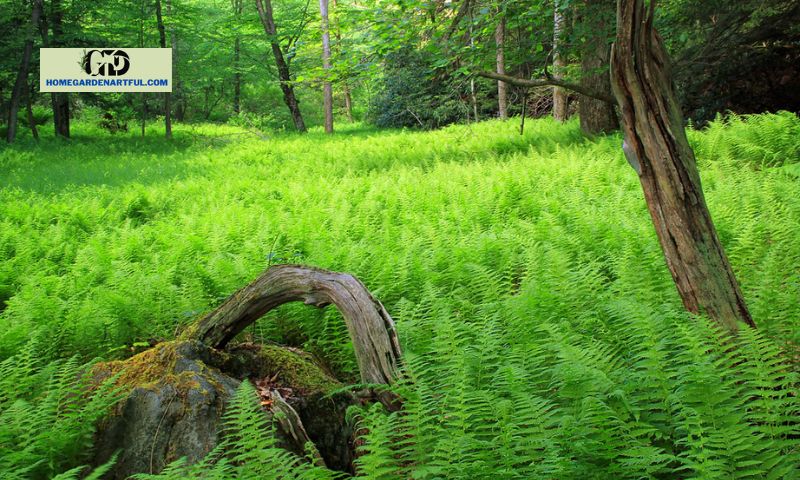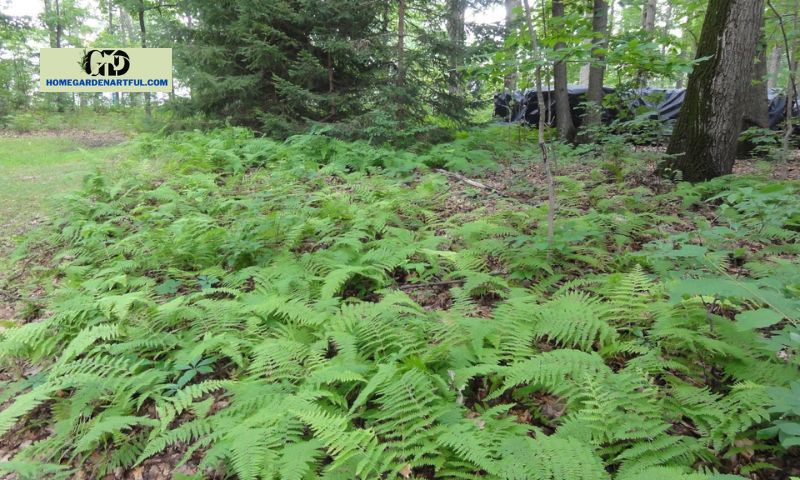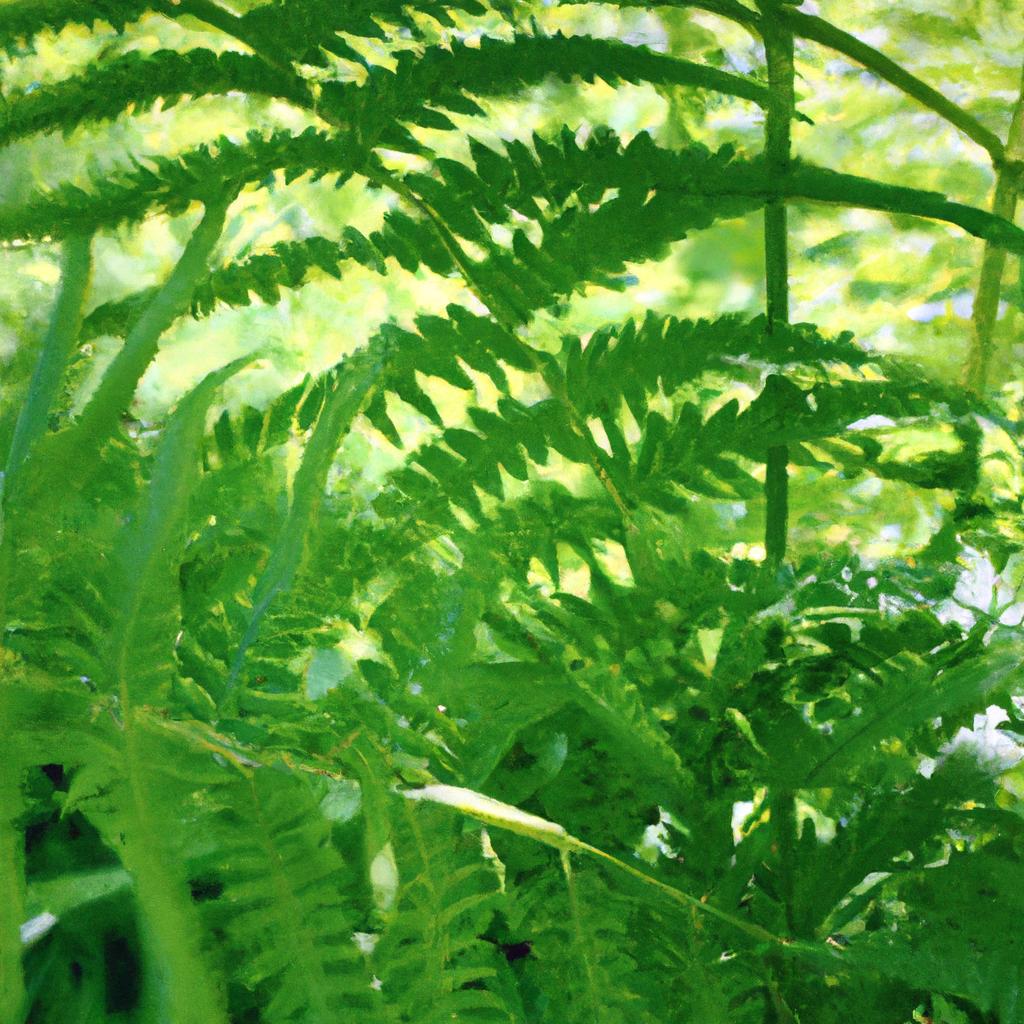Unveiling the beauty of hay scented fern: Learn how to maintain and protect this delicate plant from pests, diseases, and general maintenance practices.
Imagine walking through a lush forest, the air filled with a sweet and earthy aroma that instantly transports you to a tranquil haven. This enchanting fragrance can be attributed to the hay-scented fern, an exquisite plant that adds a touch of elegance to our natural surroundings. In this article, homegardenartful.com will embark on a journey to uncover the wonders of the hay-scented fern, exploring its unique characteristics and the crucial role it plays in diverse ecosystems.
Introducing the Hay-Scented Fern
The hay-scented fern, scientifically known as Dennstaedtia punctilobula, is a perennial fern that captivates with its delicate beauty. With its lacy fronds and feathery texture, this fern casts an ethereal presence wherever it thrives. Its name, derived from the hay-like fragrance it emits when crushed, further adds to its allure. Found primarily in North America, the hay-scented fern graces woodlands, forests, and even rocky slopes showcasing its adaptability to various environments.
Importance in Ecosystems
Beyond its visual appeal and fragrant charm, the hay scented fern plays a crucial ecological role. Acting as a valuable ground cover, this fern aids in erosion control by stabilizing soil on slopes and preventing the loss of valuable nutrients. Its extensive rhizome system helps bind the soil together, reducing the risk of landslides and soil degradation. Moreover, the hay-scented fern provides shelter and habitat for various wildlife, contributing to the overall biodiversity of ecosystems.
As we delve deeper into the enchanting world of the hay scented fern, we will unravel its extraordinary features, explore its uses, and discover the best practices for cultivation and maintenance. Join me on this captivating journey and let us unlock the secrets of this fragrant marvel that graces our natural tapestry.
Stay tuned for the upcoming sections where we will dive into the physical characteristics of the hay scented fern and unveil the benefits it brings to our environment and gardens.
Description of Hay Scented Fern

Physical Appearance
The hay scented fern exudes an enchanting charm with its distinct physical features. Its fronds, which can reach a height of 2-3 feet, are characterized by their delicate, lacy appearance. These fronds are divided into multiple leaflets, each displaying a unique pattern of incisions and lobes. The texture of the fronds is soft and feathery, giving the fern an ethereal quality that is truly captivating. When observed up close, the fronds exhibit a vibrant green color, adding a touch of freshness to any landscape.
Growth Habits and Preferred Habitats
Hay scented ferns thrive in a wide range of habitats, making them versatile and adaptable plants. They are commonly found in shady woodlands, forests, and along the edges of streams. These ferns prefer moist, well-drained soils but can tolerate a variety of soil conditions, including acidic or alkaline soils. Their ability to grow in both sunny and shady areas makes them an excellent choice for gardeners seeking to add a touch of elegance to different parts of their landscape.
One notable characteristic of hay scented ferns is their aggressive growth habit. They spread through rhizomes, underground stems that give rise to new ferns. This rapid expansion can be both a boon and a challenge, as it allows the fern to establish itself quickly but may require management to prevent it from overtaking other plants. Additionally, hay scented ferns are known for their resilience, being able to withstand harsh winters and bounce back with vigor in the spring.
In the following sections, we will explore the various benefits and uses of hay scented ferns, shedding light on their ecological significance and potential medicinal properties. Let us continue our exploration of this remarkable fern and uncover the secrets it holds.
Benefits and Uses of Hay Scented Fern

Ecological Benefits for Erosion Control and Soil Improvement
The hay scented fern goes beyond its aesthetic appeal and offers significant ecological benefits to our environment. One of its remarkable contributions lies in its ability to combat erosion and improve soil quality. With its extensive root system and spreading rhizomes, this fern acts as a natural erosion control agent, preventing the loss of soil on slopes and embankments. By firmly anchoring itself in the ground, the hay scented fern helps stabilize soil structures, reducing the risk of landslides and soil erosion caused by heavy rainfall or human activities.
Additionally, the hay scented fern plays a vital role in improving soil quality. As it grows and spreads, this fern steadily breaks down organic matter, enriching the soil with valuable nutrients. The decaying fronds of the fern act as a natural mulch, providing a protective layer that conserves moisture, suppresses weed growth, and enhances the overall health of the soil. By fostering nutrient cycling and creating favorable conditions for other plant species, the hay scented fern contributes to the ecosystem’s resilience and productivity.
Medicinal Uses and Cultural Significance
Beyond its ecological benefits, the hay scented fern has garnered attention for its potential medicinal uses and cultural significance. While extensive scientific research is still ongoing, traditional medicine practices have recognized the fern’s healing properties. Some indigenous cultures have utilized the hay scented fern for its purported antiseptic and anti-inflammatory properties. Infusions or poultices made from the fern have been applied topically to soothe skin irritations, burns, and insect bites. However, it is important to note that further scientific studies are required to validate and understand the full extent of its medicinal potential.
Culturally, the hay scented fern holds significance in various indigenous communities. It is revered as a sacred plant and plays a role in spiritual ceremonies and rituals. The fern’s delicate fronds and its distinctive fragrance have inspired artists, poets, and nature enthusiasts, symbolizing resilience, grace, and the interconnectedness of all living beings.
As we uncover the benefits and potential uses of the hay scented fern, we gain a deeper appreciation for its multifaceted nature. Join me in the upcoming sections where we will explore the cultivation techniques and general maintenance practices to ensure the thriving presence of this extraordinary fern.
Cultivation and Propagation

Cultivating Hay Scented Fern in Garden Settings
Adding the captivating beauty of hay scented ferns to your own garden is an excellent way to create an enchanting oasis. Cultivating these ferns requires careful consideration of their preferred growing conditions. Let’s explore some guidelines to help you successfully nurture these delicate wonders.
1. Selecting the Ideal Location: Hay scented ferns thrive in partial to full shade, making them perfect for shaded areas of your garden. Choose a spot that receives dappled sunlight or filtered shade throughout the day. Avoid areas with intense, direct sunlight, as it can scorch the delicate fronds.
2. Soil Conditions: These ferns prefer well-drained, fertile soil with a slightly acidic to neutral pH. Before planting, amend the soil with organic matter such as compost to improve its texture and nutrient content. This will create the optimal environment for hay scented ferns to flourish.
3. Watering Needs: Adequate moisture is essential for the healthy growth of hay scented ferns. While they can tolerate periods of dryness, consistent watering is crucial, especially during hot and dry periods. Ensure the soil remains evenly moist, but avoid overwatering, as it can lead to root rot.
Propagation Methods: Spores or Division
Hay scented ferns can be propagated through two primary methods: spores and division. Let’s explore these techniques to help you expand your fern collection.
1. Spore Propagation: Propagating hay scented ferns from spores allows you to grow new plants from scratch. Collect mature fronds in late summer or early fall when the spores are ripe. Place the fronds in a paper bag and allow them to dry for a few days. Then, gently shake the bag to release the spores onto a tray of moist sterilized soil. Cover the tray with plastic wrap to create a humid environment and keep it in a cool, shaded area. With patience, the spores will germinate and develop into young ferns.
2. Division: Dividing established hay scented ferns is a quicker way to propagate and create new plants. In early spring, carefully dig up the mature fern clump and use a sharp, sterilized knife to divide it into smaller sections. Each section should have a portion of the rhizome and several fronds. Replant the divisions in prepared soil, ensuring they receive proper care and maintenance.
By following these cultivation guidelines and utilizing the propagation techniques of spores and division, you can successfully cultivate and expand your collection of hay-scented ferns. Stay tuned as we uncover common issues and maintenance practices to ensure the health and vitality of these delicate ferns.
Conclusion
In conclusion, the hay scented fern is a remarkable plant that adds a touch of elegance and fragrance to our natural landscapes. Its delicate appearance and hay-like scent make it a true marvel to behold. Throughout this article, we have explored the unique characteristics of the hay scented fern and uncovered its importance in various ecosystems.
From its ability to stabilize soil and prevent erosion to providing shelter for wildlife, the hay scented fern plays a vital role in maintaining the delicate balance of our environment. Its adaptability and resilience allow it to thrive in diverse habitats, making it a valuable addition to gardens and landscapes.
For those looking to cultivate the hay scented fern, it is important to consider its preferred soil conditions, light requirements, and watering needs. By following proper cultivation and propagation techniques, you can bring the beauty and benefits of this fern into your own garden.
However, it is essential to be aware of common pests and diseases that may affect the hay scented fern. Identifying these issues early on and implementing preventive measures can help ensure the health and vitality of your fern. Regular maintenance practices such as pruning and fertilizing will also contribute to its overall well-being.
As nature enthusiasts, it is our responsibility to appreciate and preserve the hay scented fern in its natural habitats while using it responsibly in our gardens and landscapes. Let us embrace the fragrant allure of this remarkable fern and continue to foster an environment that celebrates the beauty of nature.
Thank you for joining me on this journey of discovery. To learn more about gardening, landscaping, and the wonders of the natural world, visit homegardenArtful.com. Together, let us nurture the beauty that surrounds us.


